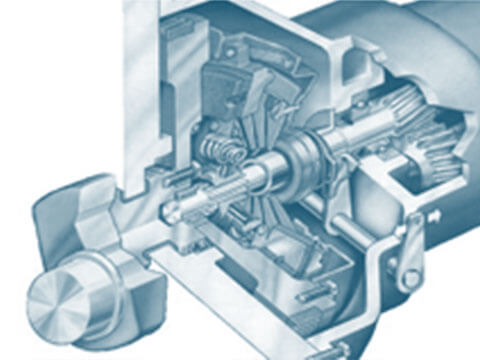Drive system
The drive system on electric vehicles is also called an electric drive. In purely electric cars, the vehicle is powered exclusively by an electric motor. The driveline on electric cars includes components like the motor(s), battery, power electronics and inverter. Fuel cell vehicles are a special case – their drive system comprises the electric motor, battery, a hydrogen storage unit, and the fuel cell where the hydrogen’s energy (stored in chemical form) is converted into electrical energy.
The electric motor:
An electric motor is an electrical machine that converts electrical power into mechanical power. The way that electric motors cause electric vehicles to move is by transferring their kinetic energy to the wheels.
The various types of electric motors
Electric motors generally fall into one of the following categories:
- Direct-current motors
- Three-phase motors
- Asynchronous motors
- Synchronous motors
The type of motor now almost always used in modern electric vehicles is the three-phase motor.
The ideal place to install an electric motor is right next to the axle that it is supposed to power. There are different ways to mechanically couple an electric motor with the wheels. Most of the time this is done with a reduction gear and drive shafts, or by integrating the motor into the wheel as a wheel hub motor.
E-axle:
An e-axle is a drive solution in which the motor, power electronics and transmission are combined into a compact unit that directly powers the vehicle’s axle. This reduces the complexity previously associated with e-drives and makes the driveline more cost-effective, more compact and more efficient. E-axles can be installed on either the front axles or the rear axles of hybrid vehicles and electric cars.
Wheel hub motor:
A wheel hub motor is integrated into the wheel itself, usually in the rim. This type of drive negates the need for a central motor unit, as well as the drivelines and transfer case that are connected to the wheels. The greatest disadvantage is that there is an increase in unsprung weight. To this day, wheel hub motors still haven’t caught on.
Fuel cell:
The fuel cell is where energy that is stored in chemical form as hydrogen is converted into electrical energy. This energy is then stored in a battery or fed directly to an e-motor powering the vehicle.

